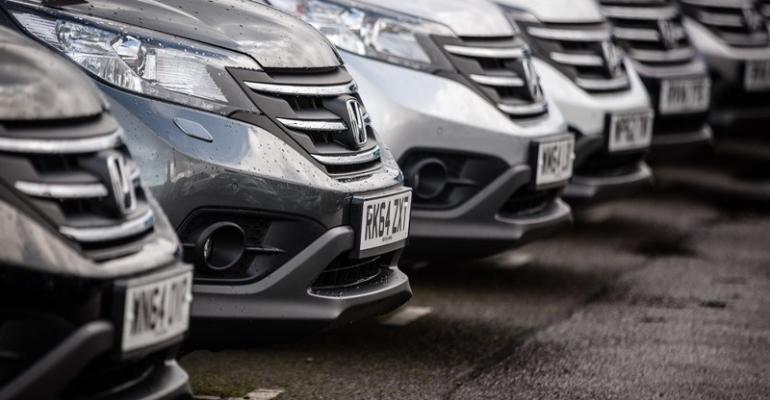NEW YORK – Analysts began the year cautioning the auto-sales boom was tempering, and the first quarter appears to be doing nothing to change minds.
Speaking here at the 2017 NADA/J.D. Power Automotive Forum that precedes media days at the New York International Auto Show, Thomas King, vice president-U.S. PIN OEM Operations for J.D. Power, says he is sticking to a forecast of record U.S. sales this year of 17.6 million vehicles, but that volume will be driven by production, not demand.
Signs began to surface last year that the market was plateauing, with loan terms rising, incentives at record levels and inventories beginning to bulge, and none of those negative factors were reversed in Q1, King notes.
The good news is retail sales remained strong in January-March, at 3.1 million units, flat with the past two years. Average transaction prices on new vehicles reached a Q1 record $31,400 and industry revenue also was a high for the quarter at $98 billion.
If those demand and pricing trends hold for the rest of the year, consumers will spend an additional $6 billion on new cars and trucks this year, compared with 2016, he says.
“We are going to see a record year,” King says. “The top lines are great; it’s what’s going on below the surface (that’s a concern). It’s going to be a really challenging market to navigate.”
Among the red flags tempering King’s enthusiasm:
- Production remains out of whack, with capacity still skewed too much toward cars when buyers are turning to CUVs in big numbers. Six of 10 models lost volume in the first quarter, as did half of all automotive brands. “I’m pretty sure half of all brands weren’t planning on taking a step back,” he says.
- Overall inventory ended the quarter at 4.1 million units, up from 3.8 million in like-2016 and a half-million units higher than in Q1 2015, when retail demand was at an identical level. That’s a snapshot of the market King calls scary.
- Incentives averaged $3,900 per unit in Q1 industrywide, up from $3,400 year ago. Last year finished with incentives at $4,000 per vehicle, “higher than anything in the deepest, darkest days of the recession.”
- Used-vehicle prices have fallen dramatically in the past year, and that’s making leasing a more difficult proposition for automakers. Leasing ran at 30.7% of sales in Q1, down slightly from year-ago but still a high number, King says. If automakers miss on their residual calculations by just $100 per unit, it will cost the industry $500 million, he says. “If you have a bigger miss, the industry could easily have a multibillion-dollar profit issue.”
- Loans of 72 months accounted for 33.9% of new-vehicle sales contracts, up from 32.3% year-ago. “Short-term that’s great, it helps people buy new cars,” King says. “But headaches will come several years hence.”
On the bright side, Nariman Behravesh, chief economist for IHS Markit, tells the conference the outlook for the U.S. economy is strong, as long as President Trump pursues a pro-growth agenda rather than a pro-protectionism one. He says his confidence that will be the case has increased in recent weeks.
“There’s a lot of bluster, but in the end (Trump’s) a businessman,” Behravesh says.
[email protected] @DavidZoia





